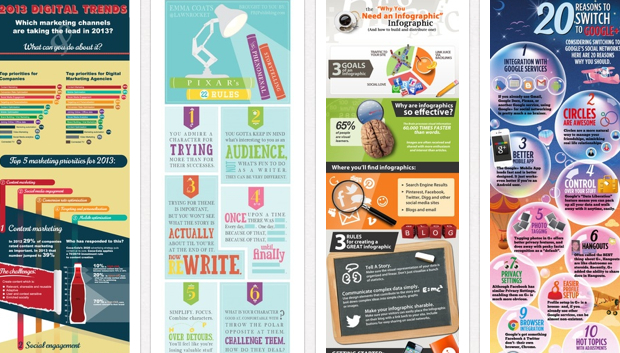
Infographics Are Hot, Your Boring Data is Not
This article by VerticalResponse CEO and founder Janine Popick originally appeared on Inc.com.
Back in October, we published a big social media infographic about how much time and money small businesses invest in social media activities. This was the first infographic we’d ever created.
It caught on like crazy! Within days, we got more than a dozen write-ups from press and bloggers who re-posted the infographic.
Infographics are hot these days because they interpret piles of stats, data and other information in an eye-catching, visual way. It’s easy content not just for you, but for others who re-post it on their sites or blogs. (And hopefully they’ll link back to your site, which gives you a nice little SEO boost.)
So, where do you start? What if you don’t have a big budget to hire a designer? And how do you get people sharing? Here’s some low-cost tips:
1. Get Your Data
Infographics are all about visualizing data and information, so you can’t build one without a clear idea of what you want to communicate. Make sure there’s an interesting story or angle; the most creative infographic isn’t going to make up for dull, pointless information.
You can create one around your own data and research, like we did. (We surveyed almost 500 of our small business customers on their social media habits and spend.) Or, you can compile a bunch of stats on the same topic from reputable sources or companies – just make sure you give ’em credit in the graphic.
2. Use a Free or Low-cost Design Tool
No designer? No problem. Check out these three infographic creation tools for the non-artist:
- Visual.ly: Visual.ly is sort of a one-stop infographic shop. It has a large database of infographics created by other users, if you need inspiration or are looking for content to share. You can create your own infographic using their free templates and tools. Or you can tap into their network of designers to create an infographic for you – for a price. Cost: free for the database and self-service creation tools; work with a designer starts at $1,495
- Infogr.am: With Infogr.am, you can upload your data in the form of an Excel or .csv spreadsheet, and it’ll auto-magically turn them into charts (bar, pie, stacked, donut, line, scatter, etc.) that look way better than what you can do in Microsoft Office. Cost: free
- Piktochart: Our designer actually used Piktochart to help with some of the elements in our small biz infographic. You get a variety of “visualizations” (shapes, icons, vectors, text, etc.) that you can drag and drop into your infographic theme. You also have the ability to pick a color scheme, select a font and more when you pay for the “pro” options. Cost: starts at free; $29/month or $199/year for the “pro” version.
3. Spread the Word
Have one central place for your infographic where people can link to; ideally, you would publish it on your site or blog. Make it as easy as possible for people to share online. Include an html embed code so people can re-publish it easily on their sites, and include social media sharing buttons so people can share with their networks.
Then, start sharing! Tweet, post to Facebook and LinkedIn, and don’t forget to pin on Pinterest. Roll out your tweets over the course of a few days by sharing one tidbit or data point at a time (always linking back to the full infographic, of course). Write up a pitch or press release and email it to press and bloggers who cover the topic of your infographic. Again, it’s easy content for them. You might be surprised by who’s interested.
Do you enjoy reading infographics? Has your company ever created one? Would love to know.
© 2013 – 2018, Contributing Author. All rights reserved.


